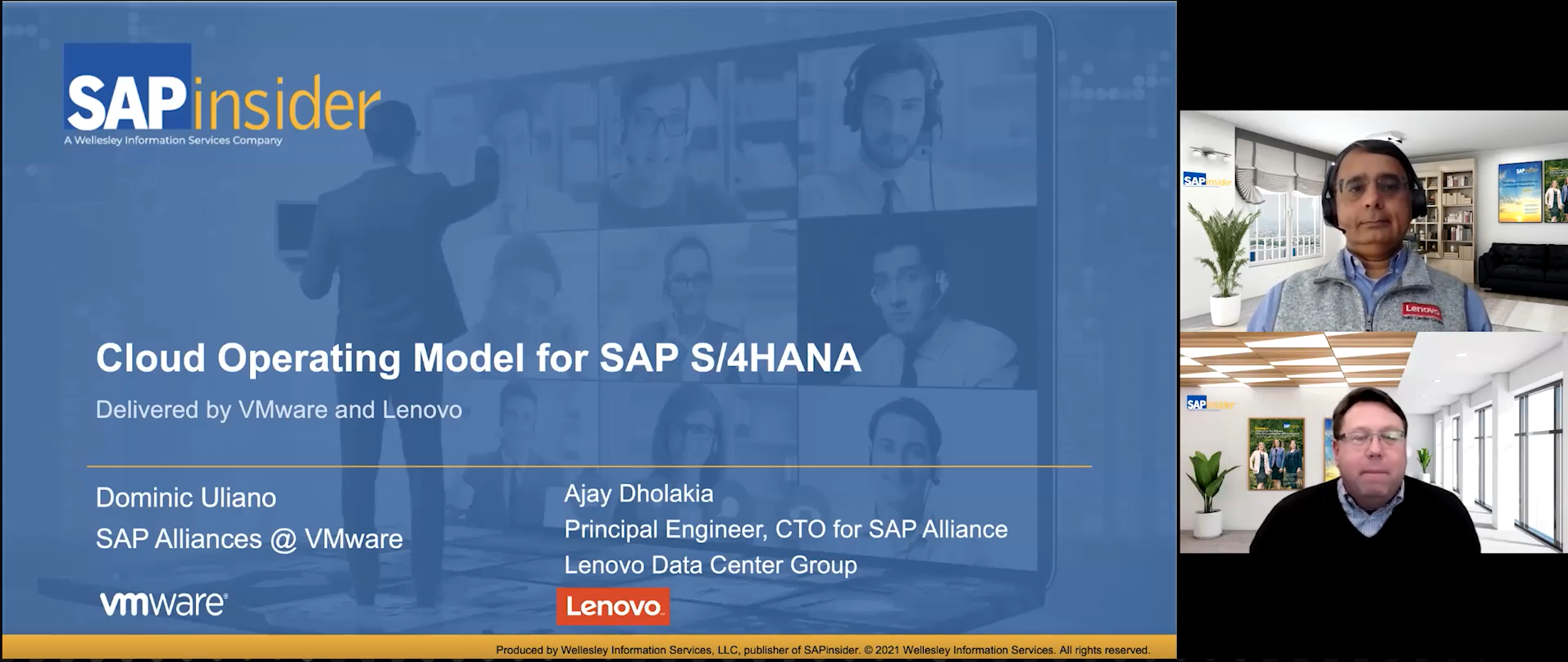The SAP S/4HANA Journey
by Heather Black, Senior Editor, SAPinsider
SAP S/4HANA is on nearly everyone’s mind — according to SAPinsider’s February 2020 SAP S/4HANA Migration Benchmark Report, 85.5% of survey respondents are somewhere along the journey, whether it’s an evaluation or live deployment. Regardless of where you are in this journey, there are a lot of questions about what this move means for your business. Sven Denecken, Senior Vice President of SAP S/4HANA Product Success and Customer Co-Innovation at SAP, kicked off day two of the SAPinsider 2020 Virtual Conference with a look at what the move to SAP S/4HANA means for SAP customers, and then fielded questions from attendees during an informative Q&A session following the presentation.
Denecken framed his talk around the why, what, and how of SAP S/4HANA. When it comes to the why, which is the digital transformation both customers and SAP are navigating together, he emphasized that it’s not enough to just throw technology at a problem, you need to understand why you are using the technology. You also need to understand customer expectations, which are not only centered on speed, but also the ability to adapt to disruptions and changes, and how business processes and models are changing. “From a strategic perspective, business models will keep changing, not only because of disruption, but also evolution in industries,” he said.
A solid understanding of what the product strategy for SAP S/4HANA means for SAP customers as they move forward with their business transformations is important as well, according to Denecken. With SAP S/4HANA, SAP is focusing on sustainability, openness, and choice for customers, through a single backbone that provides the ability to integrate and extend solutions, in the cloud and on premise, while maintaining cohesion. “Openness is a key ingredient no matter where you are,” he says, “It gives you the ability to react to changes fast.”
Last, but far from least, is the question of how it will work from a technical, architectural, and business process point of view. SAP S/4HANA is structured as a lean core with modular extensions and best-in-class line-of-business (LOB) solutions supported by automation, according to Denecken, with flexible options for deployment depending on customer needs, whether it’s the standardization of the cloud or the flexibility of on premise. It is also important to ensure that end-to-end business processes are seamless, secure, and manageable. “I happen to believe that end-to-end processes are the currency of every business,” he said.
Following the presentation, Denecken fielded several questions from attendees, including how he has seen COVID-19 affect SAP S/4HANA adoption. “If we look at the adoption of SAP S/4HANA, we have seen much more growth in the cloud,” he said, “not only from new customers who want to be predictable, but also from existing customers who see it as the right time scale up, and actually also left and right.”
Attendees were also keen for insight into the skills required for SAP S/4HANA, and the potential impact of automation. Denecken emphasized that the idea isn’t to completely automate ERP, but instead enable businesses to focus on the exceptions or the highest-impact areas rather than on everything. “There will always be a need for guardrails,” he said.
And regarding the tens of thousands of ABAP developers out there, there is absolutely a role with SAP S/4HANA. It’s not just Java and JavaScript that are supported for SAP Cloud Platform development, which is where SAP is focusing new developments, ABAP is also a choice, so ABAP developers can take their knowledge with them. “It’s that openness and the coherence to not decide by technology, but by the use case, what the best approach is going to be,” he said.
The pros and cons of moving to the cloud, and how to make that move, was another subject of interest from attendees, and Denecken said that the right answer requires an educated discussion that takes into consideration the cloud layer you’re talking about — infrastructure as a service (IaaS), platform as a service (PaaS), or software as a service (SaaS) — and an understanding of where you’re going. “Whether it’s on the infrastructure or the SaaS layer, you need to know why you’re going there, how much you want to go, and how ready is your organization.”
A recording of the full keynote and the following Q&A, including answers to questions on integration and navigating the migration path, will be available on demand soon.








